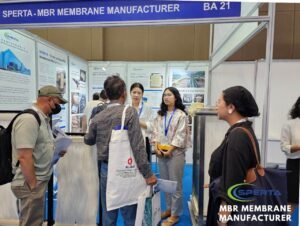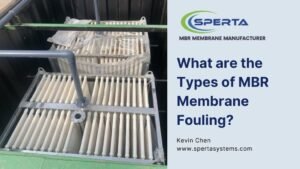In the vast landscape of wastewater treatment, there’s a constant buzz about innovative technologies. Among these, the MBR Membrane Tank stands out, promising efficiency and sustainability. But with all the technical jargon thrown around, it’s easy to get lost. What is this tank, and why is it causing such a stir?
An MBR Membrane Tank, or Membrane Bioreactor Tank, is a sophisticated system that merges biological processes with membrane filtration. This union ensures wastewater undergoes rigorous treatment, resulting in cleaner, safer water.
Stick around as we delve into the workings of this remarkable tank.
What Constitutes an MBR Membrane Tank?
The MBR tank isn’t just a container; it’s a well-orchestrated ensemble of components. Each part plays a pivotal role. Every segment is crucial for the tank’s optimal performance, from the inlet where wastewater enters to the membranes that filter out impurities.
How Does Wastewater Navigate Through the Tank?
Once wastewater enters the tank, it embarks on a transformative journey. Initially, microorganisms get to work, breaking down organic pollutants. As these tiny critters feast, they convert harmful substances into less menacing forms.
What’s the Role of Biology in This Process?
The biological component is the unsung hero of the MBR tank. Microorganisms, including bacteria, thrive in the tank’s environment. They munch on pollutants, turning them into water, carbon dioxide, and other benign substances. It’s nature’s way of cleaning up, and the MBR tank harnesses this power to the fullest.
Membrane Filtration: Why Is It Central to the Process?
After the biological treatment, it’s time for the star player to step in: the membrane. Acting as a barrier, it filters out any remaining contaminants. Depending on the membrane’s pore size, even the tiniest of particles can be trapped, ensuring the water that emerges is of the highest quality.
Can Challenges Arise with MBR Tanks?
Like any system, the MBR tank isn’t immune to issues. Membrane fouling is a common culprit. Over time, particles can accumulate on the membrane’s surface, hindering its performance. However, regular cleaning and maintenance can keep such challenges at bay.
Why Should Industries Consider Adopting MBR Membrane Tanks?
For industries, wastewater treatment is more than a regulatory requirement; it’s a commitment to sustainability. MBR tanks offer a dual advantage. They not only ensure compliance but also pave the way for water reuse. Such systems are invaluable in an era where water scarcity is a looming threat.
Conclusion
The MBR Membrane Tank is a testament to how technology can amplify nature’s processes. Combining biological treatment with membrane filtration offers a solution that’s both efficient and sustainable. As we grapple with wastewater management challenges, embracing such innovations is not just desirable; it’s imperative.
The above is the information about the MBR Membrane tank. If you still have questions about the membrane bioreactor or need to purchase MBR membranes, don’t hesitate to contact SPERTA.
Shanghai SPERTA Environmental Technology Co., Ltd. has specialized in producing water treatment products for many years. The company has the core technology of producing MBR membrane components. It has a high production capacity, aiming to build a high-quality brand of MBR production and sales all over the world. If you have any needs, please feel free to contact us.









